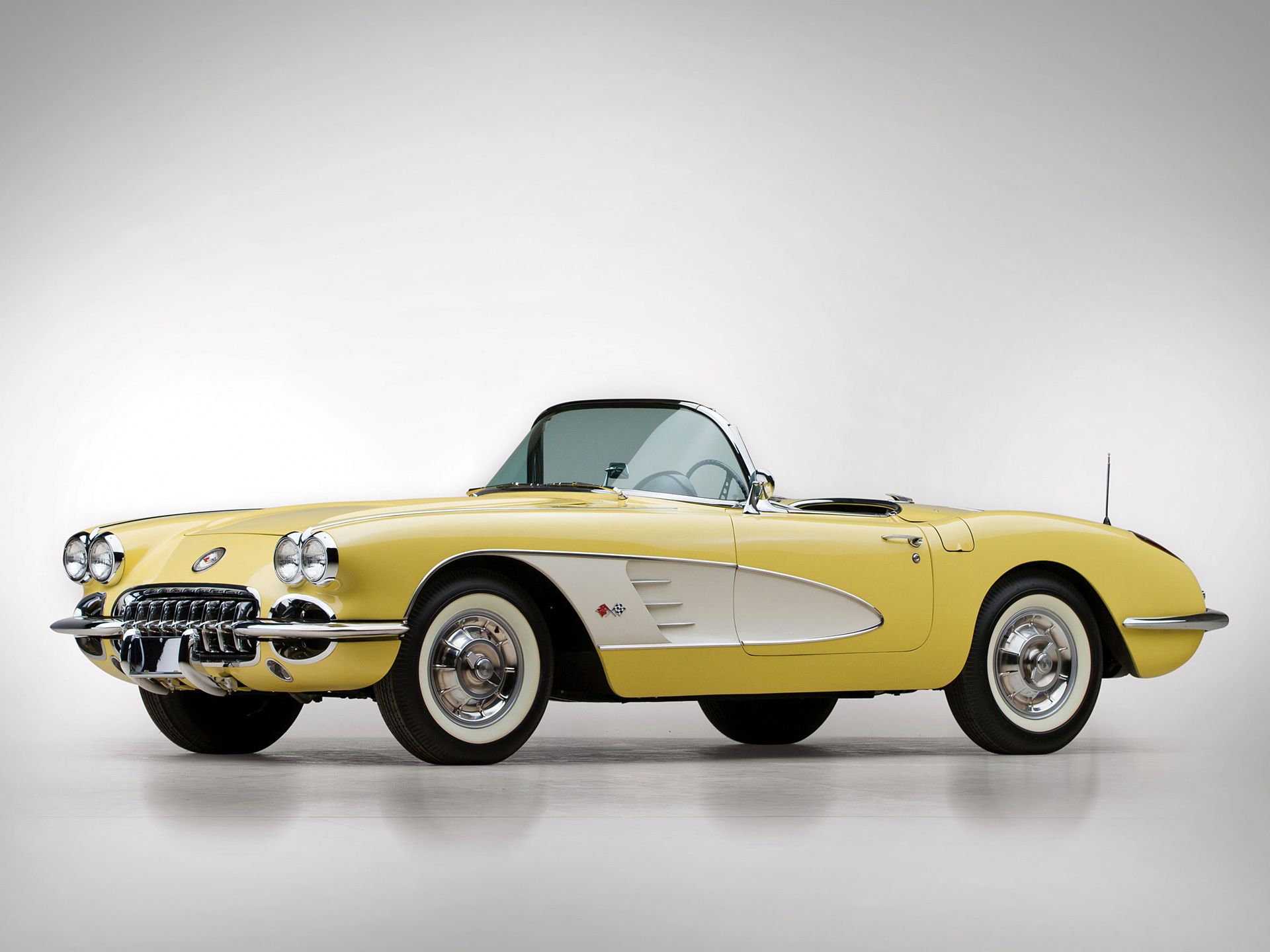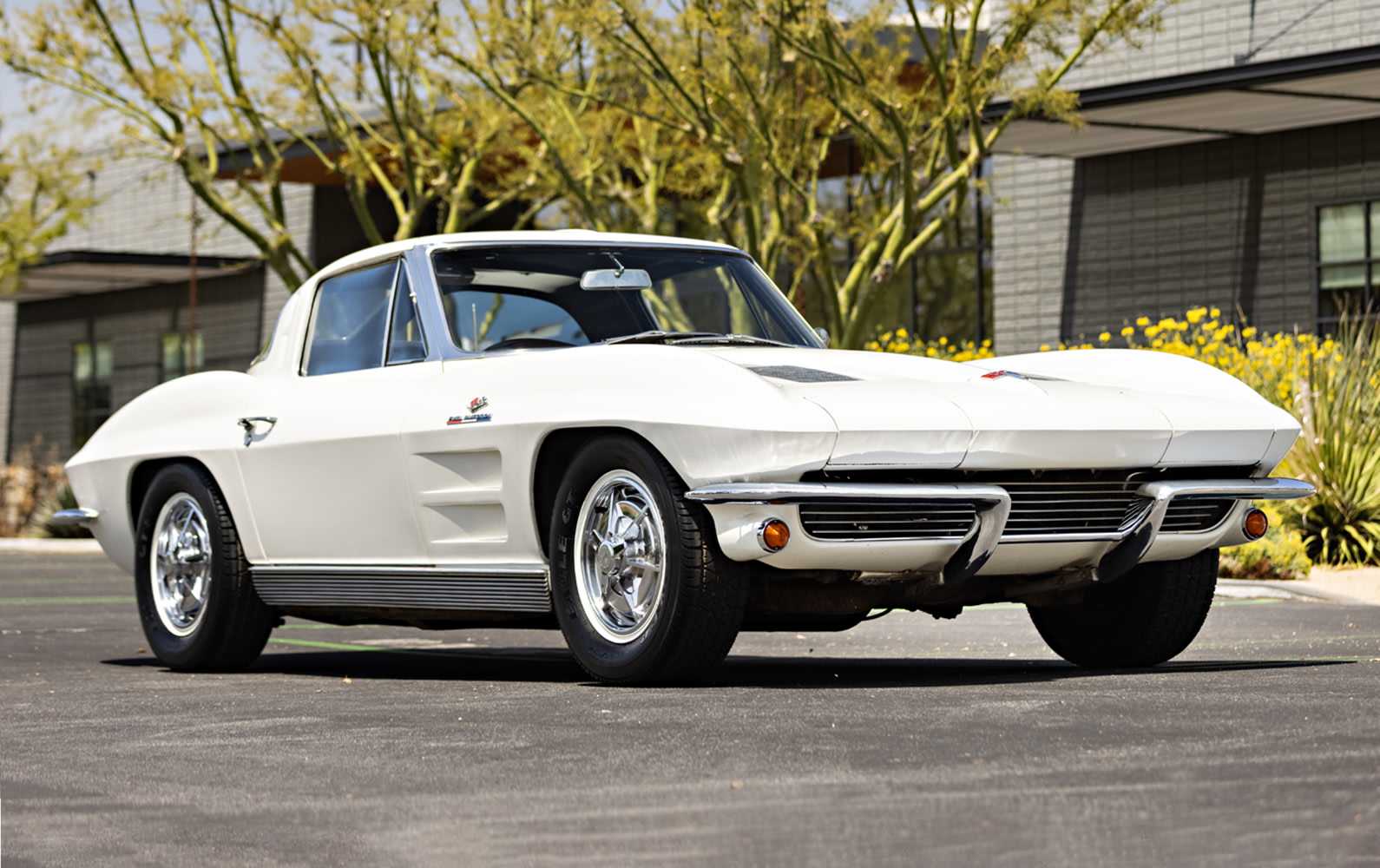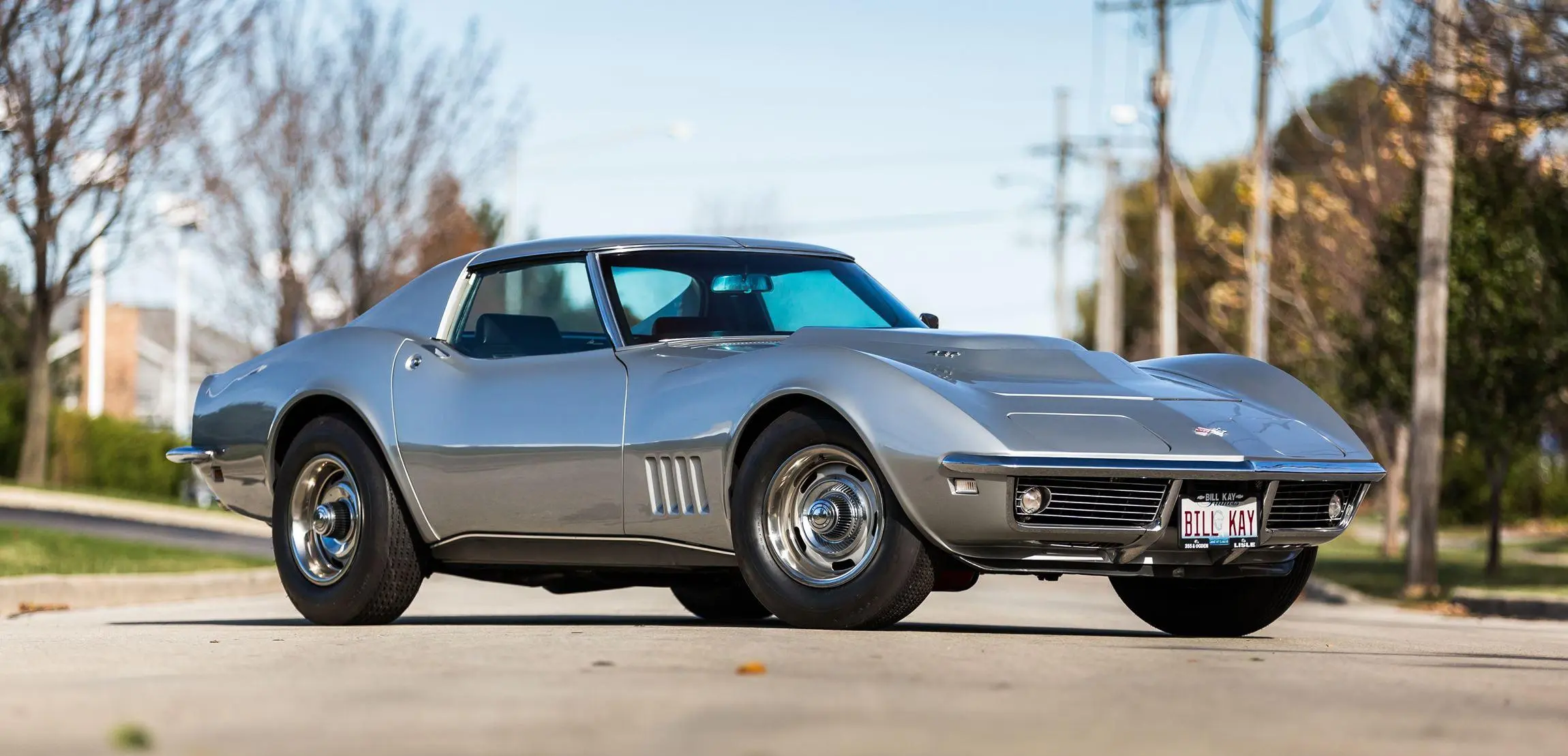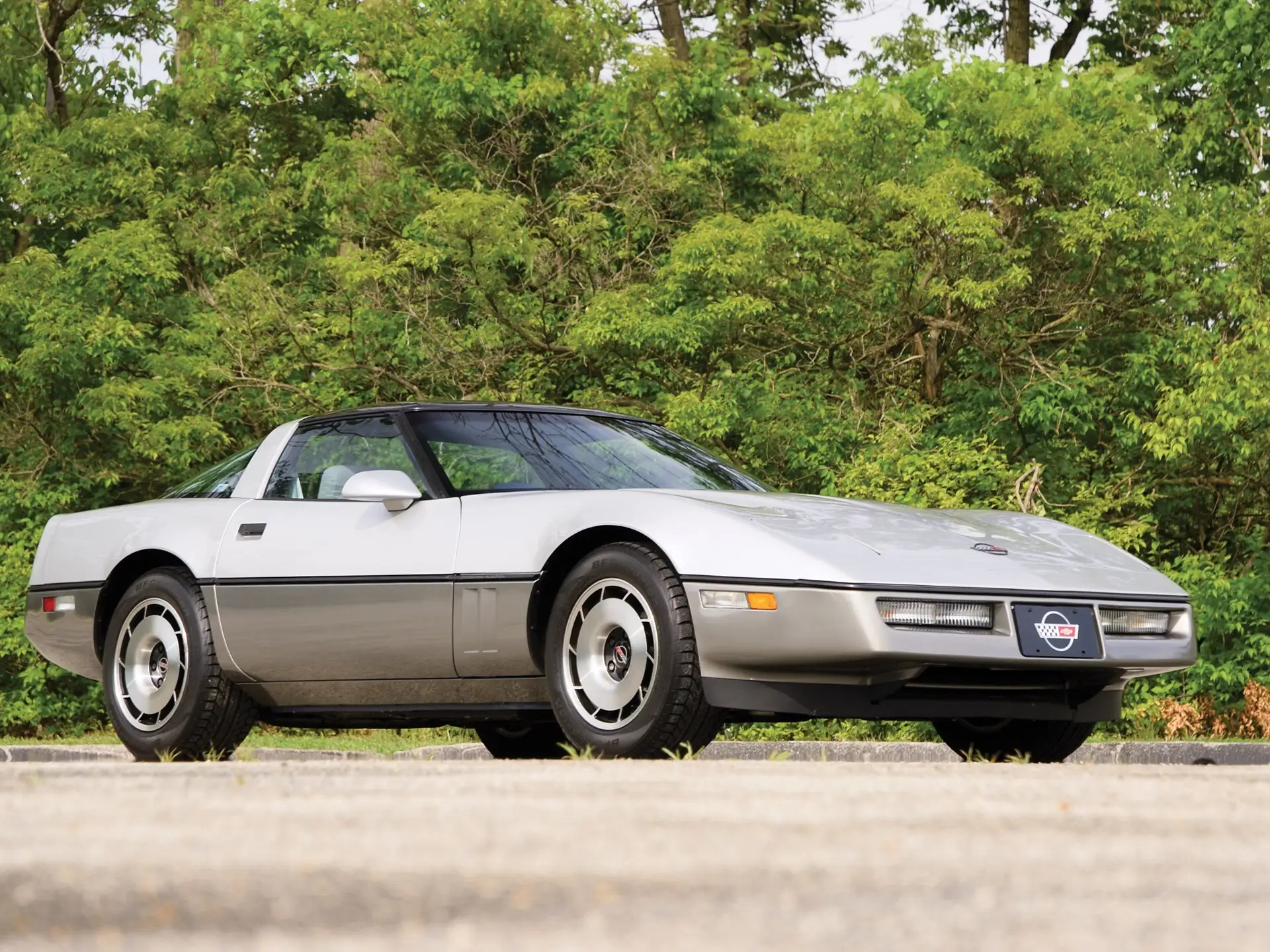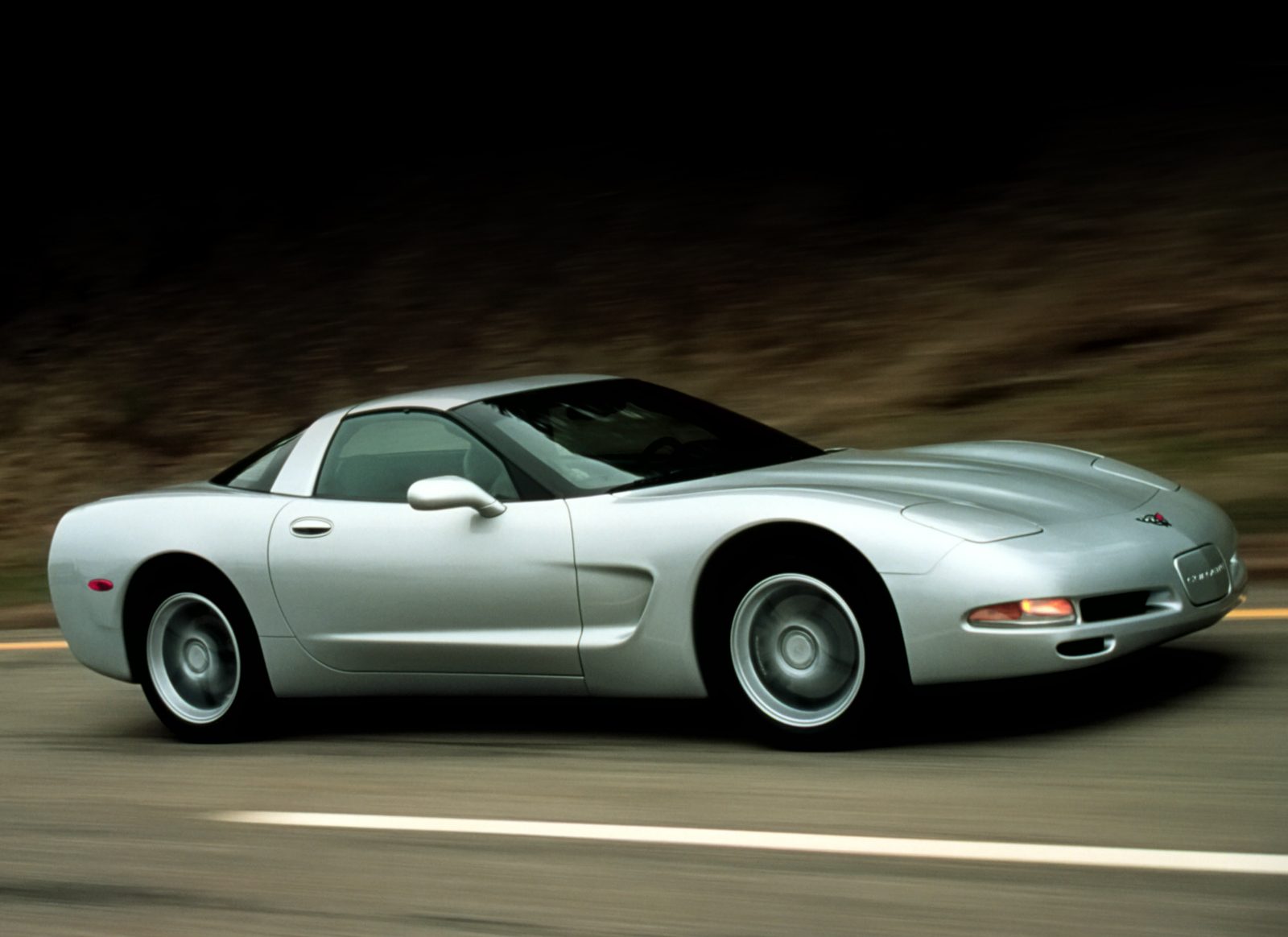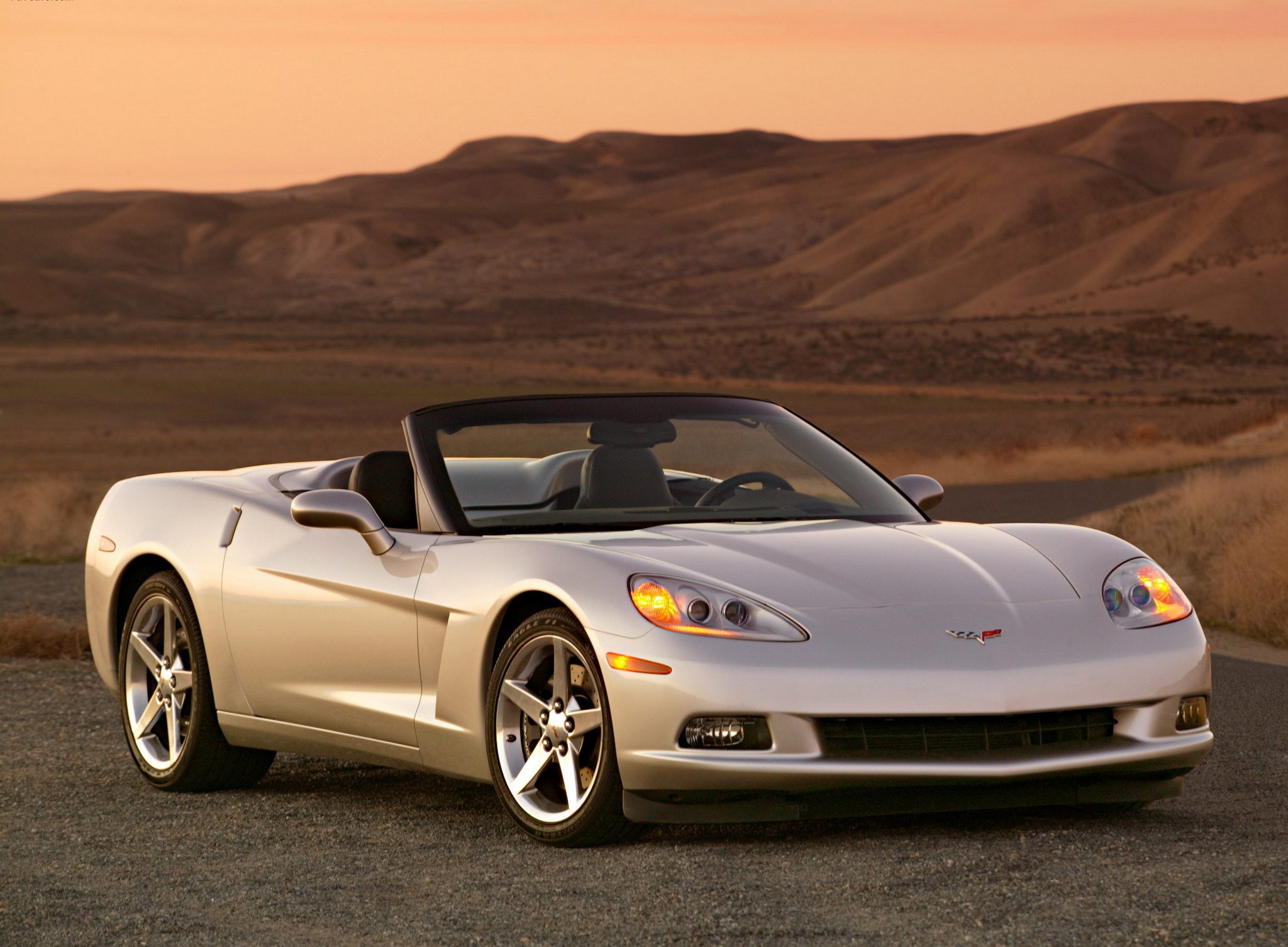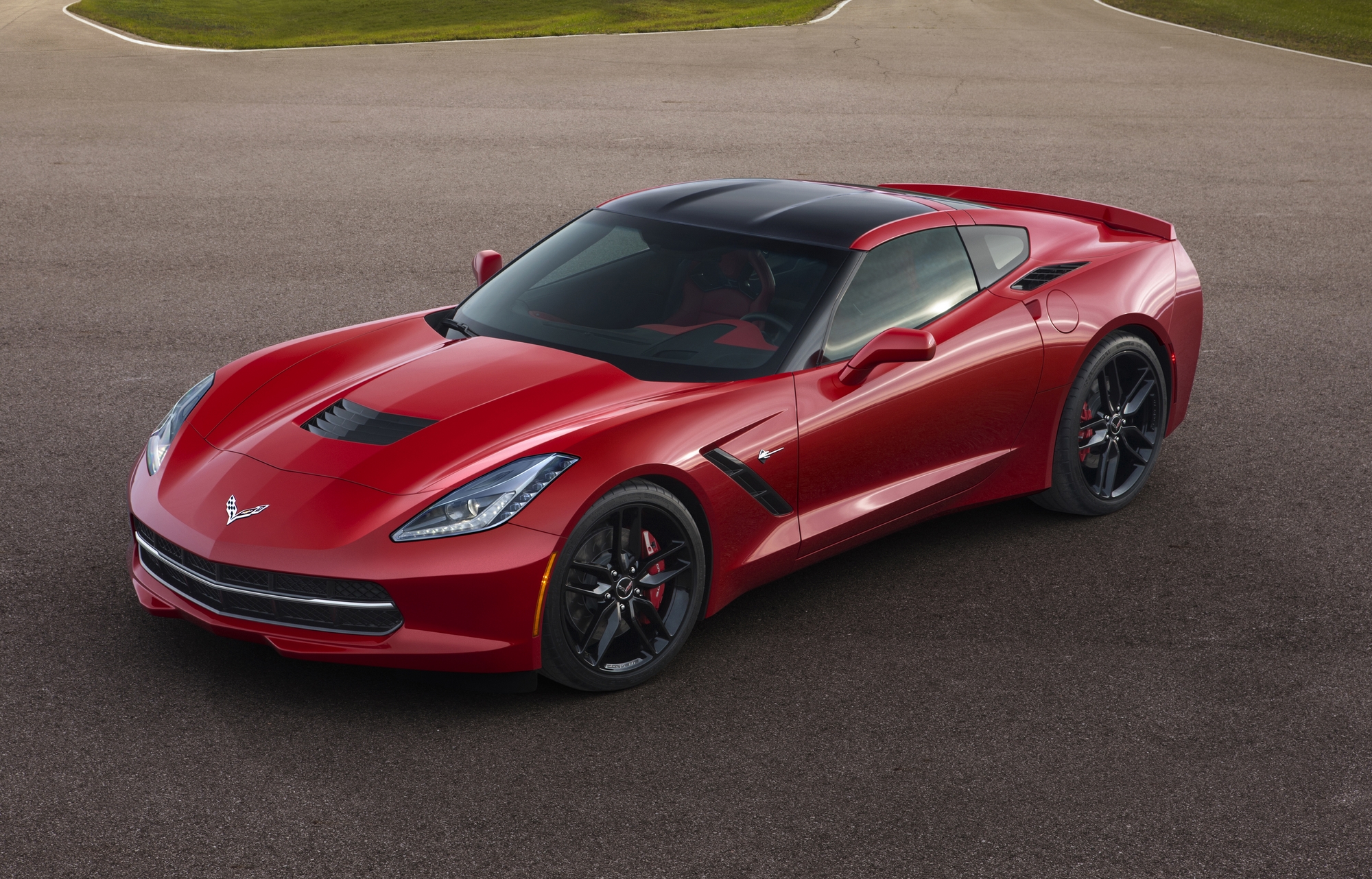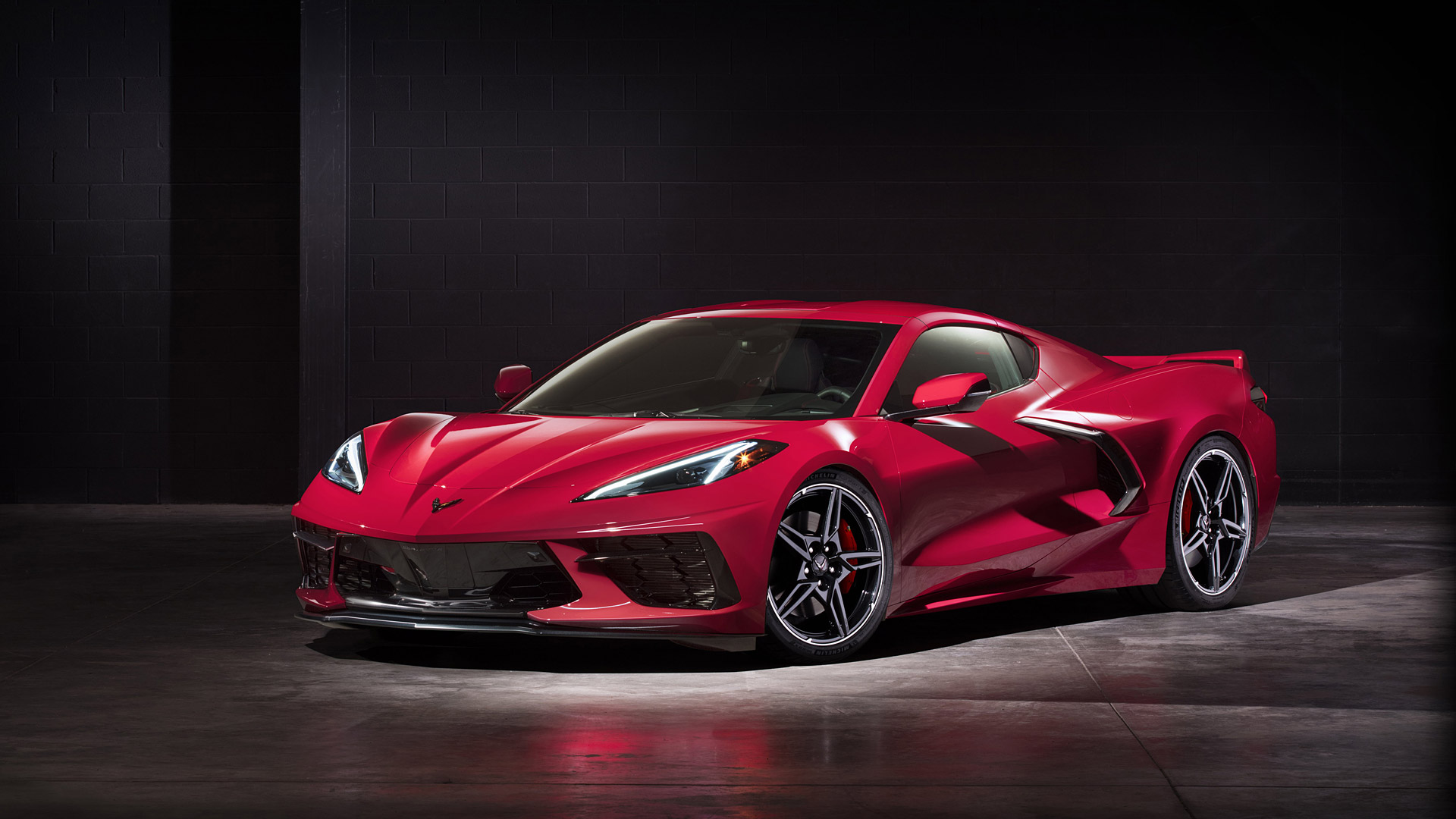Corvette Generations
From the C1 to the current C8 Corvette, we take you through eight generations of Corvette. In-depth guides, research, data and much more.
Every Corvette Generation
From the C1 all the way to the all-new mid-engined C8.
From the C1 to the current generation Corvette, the American high-performance icon has seen a lot. This list below is focused on each Corvette generation. The C1 Corvette production ran from 1953 till 1962. C2 Corvette production ran from 1963 till 1967. C3 Corvette production was 1968 till 1982. C4 Corvette production ran from 1984 till 1996. C5 Corvette production ran from 1997 till 2004. C6 Corvette production ran from 2005 till 2013. The C7 Corvette was produced from 2014 till 2019. The latest generation C8 Corvette will started production as a 2020 model year.
C1 Corvette / C2 Corvette / C3 Corvette / C4 Corvette / C5 Corvette / C6 Corvette / C7 Corvette / C8 Corvette
The C1 Corvette
The need to design and develop an American made sports car really began at the end of World War II. American servicemen, still stationed overseas in England, were able to sample the joys of driving in the MG Sports Car.
The concept Corvette was a runaway success at it’s 1953 Motorama debut, and the response it received was staggering. The car, finished in gleaming Polo White with a bright Sportsman Red interior and trimmed with chrome flourish, immediately generated such an incredible buzz so Chevrolet decided to start building it. It took GM less than 6 months to fabricate the necessary tooling and begin production of the first Corvettes and they were able to roll out the first cars later that same year as 1953 models. With the exception of a few, minor updates, the Motorama Concept Corvette went to production with it’s styling virtually unchanged. The car had a uniquely masculine, muscular, almost predatory look.
In short, it was stunning. This is the model that started it all. Initially launched with an underpowered six-cylinder engine, the first-generation Corvette eventually swapped in the model’s signature element: a small-block V8 and a manual transmission. It was then that its journey as an icon of the American automotive industry took off. Over its nine-year run, the C1 Corvette became a legitimate sports car.
C1 Timeline & Highlights
1953. The first full-scale Corvette concept was displayed as a “dream car” at GM’s Motorama in New York.
1953. On June 30, the first production Corvette rolled off of the assembly line in Flint, Michigan.
1953. Production of the 1954 Corvette began in St. Louis, MO in December of 1953.
1955. The small-block V8 displacing 265 cubic inches was introduced. Three-speed manual transmission made available.
1956. Restyled Corvette features exposed headlamps, sculpted side coves and rolled up windows. Removable hardtop offered.
1957. Optional fuel injection and option 4-speed manual transmissions are offered for the first time.
1958. First time for dual headlights.
1960. The last year Corvette features tail lights formed into rounded rear fenders, and the last with heavy grill “teeth.”
More C1 Research
The C2 Corvette
The birth and evolution of the C2 Corvette occurred amidst the successes that General Motors was experiencing at the height of the C1. By the early sixties, as Chevrolet introduced the last of the first generation Corvettes, there was no doubt – at least among the design team behind the first-generation model – that a second generation Corvette was imminent. The C2 Corvette evolved out of the C1 with the same bobbed back end and long front end, but it introduced the characteristic folding lights that would remain with the Corvette until the C6 generation. The C2 also introduced the Z06 racing package and saw the production of the rare Grand Sport. There is no doubt that the second-generation Corvette was a revolutionary departure from the original “solid-axle” C1 Corvette. This new Corvette featured fully-independent suspension and a chassis that evolved from the 1959 Stingray concept race car originally envisioned by Brock Yates and fully realized by Bill Mitchell, Zora Arkus-Duntov and Larry Shinoda.
The iconic C2 Corvettes – from 1963 to 1967 – solidified the brand as a serious contender on the world racing stage (even though it was developed in an era when GM was actively participating in the AMA racing ban). The second-generation Corvettes gave us disc brakes, independent suspension, revolutionary engine development, including the introduction of big-block power, and advances in technology on both the interior and exterior of the car. More than that, the design of the C2 Corvettes was simply beautiful “art-in-motion.”
The Sting Ray had a newly designed chassis that featured a shorter wheelbase and a faster “Ball-Race” steering (a name that was developed by the ad copy (advertisement) writers in 1963,) both of which attributed to providing the car with improved maneuverability and handling. A number of items did carry over from the C1 Corvette. This included all four of the small-block, 327C.I. V-8 engines, a trio of transmissions, and six different axle ratios. The engines that were offered for the 1963 Corvette included three carbureted versions; a 250-, 300-, and 340-horsepower variants, as well as a 360-horsepower fuel-injected engine.
C2 Timeline & Highlights
1963. The Corvette is a total restyle based on Bill Mitchell’s 1959 Sting Ray race car.
1963. First year for the Corvette coupe; only year for the split-window coupe.
1963. The Z06 is offered as an option on the 1963 Stingray (199 built).
1964. The split-window design is eliminated
1965. Big Block V8 engines were introduced for the Corvette
1966. First year for the 427 CID engine; up to 425 HP available. Holley Carburetors were standard.
1967. Optional L88 engine offered (only 20 produced).
1967. Standard features of the Corvette Sting Ray included an energy-absorbing steering column, four-way hazard warning flashers and a dual master cylinder brake system. Much of the exterior trim is removed or restyled, as well as the hood and fender vents.
More C2 Research
Generation: C3 Corvette / Body Styles: 2 Door Coupe (1968-1982), 2 Door Convertible (1968-1975) / Production Years: 1968-1982 / Designed by: Bill Mitchell & Zora Arkus-Duntov / Production: 542,861 (1968-1982) / Model Years: 1968, 1969, 1970, 1971, 1972, 1973, 1974, 1975, 1976, 1977, 1978, 1979, 1980, 1981, 1982
The C3 Corvette
The arrival of the C3 Chevy Corvette occurred far sooner than many enthusiasts would have predicted. The C1 Corvette had been produced over a period of ten years, albeit with significant design and mechanical improvements along the way. They literally began work on the next generation Corvette even as the paint was still drying on the second-generation mid-year models. The birth of the third-generation Corvette occurred during a time when the United States, and indeed the whole world, was immersed in social and political controversy. The United States was entrenched in the turbulence of the Vietnam War. U.S. involvement in Vietnam was staggering, with more than a half-million troops stationed in Southeast Asia. Almost from day one, the third-generation Corvette would fall under the discriminating eye of enthusiasts and critics alike, especially given that the second-generation Corvette had become so revered around the world.
The C2 had literally rejuvenated the Corvette franchise, and it seemed reasonable to assume that the C3 would take the next, progressive step in the car’s evolution. The rise of both muscle cars and “ponycars” would force designers of the Corvette to take pause and re-evaluate why consumers would consider the Corvette of value when it was more expensive, and less accommodating than the emerging alternatives. If the Corvette was going to continue to compete with this new onslaught of competitors, it would have to offer more than just quick starts off the line. On the other end of the automotive spectrum, European manufacturers were producing automobiles that were deemed considerably more sophisticated than the Chevy Corvette.
The C3 still holds the record for the longest production run of any generation Corvette, before or since. While early model years (1968 – 1972) featured big engines producing massive horsepower, stricter Federal emissions regulations would cause Chevrolet to reduce engine output ratings in later models (1973 – 1982). At the same time, these changes forced Chevrolet to improve upon their engineering standards. By looking for ways to reduce the car’s weight and improve upon its overall design, they were able to continue to drive performance, even with the restrictions forced upon them.
C3 Timeline & Highlights
1968. The totally restyled Corvette features an industry first for production cars – “T-top” removable roof panels.
1969. The 250,000th Corvette – a gold Convertible – comes off the St. Louis production line on November 19.
1969. The ZR-1 optional factory-installed racing package is offered on Corvette for the first time.
1970. The new LT1 Small Block V8 engine option with solid lifters is introduced and rated at 370 HP.
1971. One of the least-changed models in appearance, Chevrolet essentially 1971 production as an extension of 1970.
1972. The last to feature both front and rear chrome bumpers, a bright egg-crate grill, side-fender grills.
1973. 4,000 serial numbers were never built, so the serial number ends with 34,464 but production totaled 30,464.
1977. The 500,000th Corvette – a white coupe with red interior – is produced in St. Louis on March 15.
1978. The fastback body style marks Corvette’s 25th year of production.
1978. The special edition of the Corvette is the Indy 500 Pace Car replica – silver and black.
1981. Mid-year, production shifted from St. Louis, MO to Bowling Green, KY.
1982. The first Corvette model year to feature the convenience of hatchback design (introduced with the Collector’s Edition model).
1982. Four-speed automatic transmissions with overdrive is standard, with no manual transmission offered until late 1984.
More C3 Research
MY Research Hubs
MY Story & Guides
The C4 Corvette
In addition to the stagnation of mechanical development that had occurred over the previous two decades, there was a genuine demand from the public that General Motors rethink the design of their “American Sports car.” After many years of rumors that an “all new Corvette” had been under development, legions of Corvette fans were eager to see something completely new roll out of Bowling Green’s Corvette assembly plant. In 1984, the faithful would get their wish.
Few cars in history have ever been more eagerly anticipated than the arrival of the C4 Corvette. This new ‘Vette was a completely original design – from top to bottom – and was a contemporary interpretation of the American Classic. Admittedly, it still was not the “car-of-the future-here-today” that General Motors had eluded to secretly developing since the early 1960’s, but it was a brand-new Corvette nonetheless, and one that was bound to turn a lot of heads.
Work on the C4 Corvette actually began in 1978, shortly after General Motors management cancelled plans to replace the existing C3 Corvette with a production version of the Aerovette show car – a car that General Motors engineers had been developing since 1973. Unlike generations past, where Corvette designers and engineers would often clash on “form versus function”, the team behind the design of the C4 Corvette was one of the most cooperative partnerships between designer and engineer that General Motors has ever seen – before or since. Released in 1984, the Chevrolet Corvette C4 embraced a sleeker, more futuristic style than previous generations. From 1985 to the end of production in 1996, the C4 saw a steady increase in horsepower with each engine upgrade. Offshoots such as the ZR1 broke speed records and became collectibles.
C4 Timeline & Highlights
1984. The all-new Corvette has a drag coefficient of a 0.34 and top speed over 150 MPH.
1985. Big news for Corvette is the addition of tuned-port injection of the 230 HP 5.7 liter V8.
1986. The first convertible since 1975 is built.
1987. Callaway Twin-Turbo engine package introduced (RPO B2K).
1988. 35th Anniversary Edition is offered.
1990. The Corvette ZR-1 debuts. Driver’s side air bags become a standard feature.
1992. Performance of the Corvette’s new 300 HP 5.7 liter V8 engine is so good it's given LT1 designation.
1992. The One-Millionth Corvette – a white convertible with red interior rolls off the Bowling Green assembly line on July 2.
1993. 40th Anniversary package optional with all models – Ruby Red metallic exterior with Ruby Red interior.
1994. National Corvette Museum opens Labor Day Weekend.
1995. Corvette paces the Indy 500 for the third time (first in 1978, also in 1986).
1996. Two unique special Corvette models are available – a Collector’s Edition and a Grand Sport.
1996. Only 1,000 Grand Sports are made
More C4 Research
Generation: C5 Corvette / Body Styles: 2 Door Coupe, 2 Door Convertible (1998-2004), 2 Door Foxed Coupe (1999-2000), Z06 Coupe (1999-2004) / Production Years: 1997-2004 / Designed by: Jerry Palmer & John Cafaro / Production: 248,715 (1997-2004) / Model Years: 1997, 1998, 1999, 2000, 2001, 2002, 2003, 2004
The C5 Corvette
After a production run of more than a decade, there was no question that it was time for the next evolution of the Corvette to emerge and replace the C4. After all, the fourth generation Corvette had remained in its basic form for twelve years, which had made it the second longest production Corvette - second only to the third generation C3 Corvette, which had, in turn, remained in production for fifteen years! The evolution of the C5 began as early as 1988, when GM executives had originally planned a 1993 roll out of the fifth generation Corvette to help mark its 40th Anniversary. Despite the challenging economic and manufacturing struggles that had riddled the company and left many questioning the continuation of the Corvette, (let alone its evolution into an entirely new generation,) General Motors knew that it had to allow the car to evolve if they were to compete with the overseas imports that were quickly gaining a foothold all over the world. In May, 1989, the C5’s unveiling was rescheduled for 1994 and was then pushed out to 1995 just three months later. Despite these delays, the design of a 21st century styled, fifth generation Corvette really began in earnest, and even the earliest design drawings alluded to a car that was unlike anything that came before it. However, by October, 1992, it seemed that nobody within General Motors could accurately predict when the C5 Corvette would actually arrive.
The Corvette C5 is the fifth generation of the Chevrolet Corvette that was produced between 1997 and 2004. The cars were a significant update over their predecessor, the Corvette C4, and featured an all-new engine, a new frame, updated transmission location, and completely different styling. The C5 was sold as both a Corvette coupe and a Corvette convertible, but first-year cars were only offered in coupe format. As an overhaul of the previous generation Corvette C4, the new C5 had very few parts in common with older versions of the car. It also did not share parts with any other GM product, as Chevrolet’s engineers took the opportunity to push the boundaries of performance and technology. The resulting car was regarded as being drastically better than before. The cars featured several innovations that were considered high-tech at the time. The C5 was used to test out several technologies that were used in other vehicles later on. Standard ABS and traction control were both features that weren’t particularly common at the time. A heads-up display was offered that projected vehicle information onto the windshield, and an Active Handling System was introduced as an option in 1998 before becoming standard in 2001.
The C5 was the first Corvette to feature drive-by-wire throttle, where the vehicle's acceleration is driven by an electronic sensor and gears, rather than through a mechanical pedal and linkage. Variable effort steering was also used, which changes the level of power steering assist based on the speed of the vehicle.
C5 Timeline & Highlights
1997. Corvette featured hydroformed side frame rails, each made of a single piece of tubular steel. Transmission rear mounted.
1998. For the first time since 1962 a separate trunk with outside access returned on the Corvette Convertible.
1998. A hardtop model with permanently-fixed roof panel and external trunk lid joins the Corvette family.
1998. The LS1 V8 engine delivers 345 HP
1999. The LS1 V8 engine delivers 348 HP.
2000. Optional heads-up display offered.
2001. The Z06 is introduced with a 385 HP LS6 V8 and a top speed of over 170 MPH.
2001. New front fascia grilles improve airflow to the engine air inlet.
2002. Z06 performance reaches gets another 20 HP – for 405 – and 14 lb. ft. of more torque – for a total of 400.
2003. 50th Anniversary of the Corvette is marked by the availability of a 50th Anniversary package
2004. Special commemorative package honoring Corvette’s success at LeMans are available.
2004. Corvette paced the Indy 500.
More C5 Research
Generation: C6 Corvette / Body Styles: 2 Door Coupe, 2 Door Convertible, Grand Sport Coupe, Grand Sport Convertible, 427 Convertible, Z06 Coupe, ZR1 Coupe / Production Years: 2005-2013 / Designed by: Tom Peters / Production: 215,123 (2005-2013) / Model Years: 2005, 2006, 2007, 2008, 2009, 2010, 2011, 2012, 2013
The C6 Corvette
In January, 2004, the new C6 Corvette was unveiled at the North American International Auto Show in Detroit, Michigan. By that same summer, the first C6 Corvettes went on sale. For most, the new 2005 C6 coupes and convertibles were being hailed as “the best Corvettes ever”, although some critics weren’t wholly satisfied. The C5 was sold between 2005 and 2013 and was replaced by the C7 Corvette. The C6 had updated styling, new technology, upgraded suspension, and a larger engine over the previous C5 Corvette. Compared to its predecessor, the passenger compartment of the C6 was bigger, the overall car was shorter by about five inches and the wheelbase was longer, to improve handling and ride quality. The C6 was also the first generation Corvette to feature exposed headlights since 1962.
Development of the car began in 2000, with the goal being to “tighten” the body design to make it smaller and more space-efficient while keeping a clear visual tie to previous models. At the time, the Corvette engineering team stated the goal was not to invent a totally new car, but to perfect the details that were already in place. The C6 Corvette was introduced as both a coupe and convertible, for the first time since 1968. All versions of the hardtop coupe C6 came with a removable panel in the roof for a targa-style experience. The LS2 engine under the C6’s hood was all-new and produced 400 horsepower and 400 pound-feet of torque. It was paired with either a six-speed manual or an automatic transmission. In 2008, the engine was updated again, this time to an LS3. Displacement increased to 6.2 liters and power jumped to 430 horsepower and 424 pound-feet of torque. Combined with the lighter weight of the car, performance was improved greatly over its predecessor, with 0-60 mph times of just over four seconds.
At the time, even the standard Corvette C6 was well-liked by critics and the public. Reviewers liked the car’s improved handling, stronger engine, and improved interior. Ride quality was noted as being impressively smooth and balanced. Critics praised the car for having improved on the previous Corvette C5 in nearly every way, from performance to refinement to comfort. The Corvette C6 was regarded as a bargain, with one reviewer noting that anything within $20,000 of the Chevrolet would have a very hard time beating its performance. The Porsche 911 at the time was several thousand dollars more than the Corvette and could not match its performance.
C6 Timeline & Highlights
2005. All new design and engineering. Powered by the new 6.0L 400 HP small block V8.
2005. Exposed headlights return for the first time since 1962.
2005. Power top option for convertibles for the first time since 1962.
2005. OnStar and navigation available for the first time. Corvette paced the Indy 500.
2006. Complete redesign of the Z06 after a one year absence. Powered by a new 7.0L V8 that produced 505 HP.
2006. Six-speed paddle shift automatic transmission introduced.
2008. Powered by a new LS3 6.2L base V8 engine. Performance increased from 400 HP to 430 HP.
2009. Debut of the new Corvette ZR1 powered by a super-charged 6.2L V8 which produces 638 HP.
2010. Return of the Grand Sport model which included the base LS3 engine and Z06 level chassis.
2010. Side air bags standard on all models.
2011. Z06 Carbon Limited Edition offered to mark Corvette’s 50th anniversary at Le Mans.
2012. Chevrolet Centennial Edition (available on all models)
2013. 60th Anniversary and a special 427 Convertible Collector Edition close out the C6 generation.
More C6 Research
The C7 Corvette
On January 13, 2013, Chevrolet unveiled the all-new 2014 C7 Chevy Corvette Stingray at the Detroit Auto Show. The car, which had been kept carefully concealed by Chevrolet since their announcement that a seventh-generation Corvette was under development, was revealed to the world over a live internet feed. Working in coordination with Facebook, the popular media website YouTube hosted the event, which was viewed by more than 60,000 people worldwide. The arrival of the C7 Corvette was the culmination of months of speculation by enthusiasts, car experts, critics, and countless fans, and was treated with more fanfare and pomp-and-circumstance than a Hollywood blockbuster movie debut. The C7 Corvette took a few of its general design cues from the previous C6 Corvette, including keeping the exposed headlights. However, much of its styling was a dramatic departure from all previous models. Its look was highlighted by a more muscular and angled front end and taillights that deviated from the traditional arrangement of two sets of round lenses.
At its core, the C7 Corvette features an all-new 6.2 Liter LT1 V-8 engine. Development of the fifth-generation LT1 included more than 10 million hours of computational analysis, with more than 6 million hours alone spent on the combustion system. The result is a small-block engine that produces an estimated 450 horsepower (335kW) and 450 lb.-ft. of torque (610 Nm). It also produces 50lb.-ft. more torque than the previous 6.2L engine, instead matching the low end output of the 7.0L LS7 engine used in the 2013 Z06 Corvette. The LT1 engine combines advanced technologies, including direct fuel injection, Active Fuel Management, continuously variable valve timing, and an advanced combustion system that delivers more power while using less fuel. In fact, during normal driving conditions, it is estimated that the new Corvette gets an approximate 26 miles per gallon (highway), thanks in part to the LT1’s ability to run in a fuel-saving V-4 mode while driving at cruising speeds.
C7 Timeline & Highlights
2013. The seventh generation Corvette is introduced at an invitation-only reveal in Detroit on January 13.
2013. The Stingray designation returns.
2013. Indy 500 is paced by a 2014 Laguna Blue Corvette Z51.
2013. Aluminum frames become the standard for all coupe and convertible models.
2013. Michelin becomes the exclusive tire supplier for Corvette.
2013. The Stingray features a LT1 V8 engine with 460 HP, the most powerful standard Corvette to date.
2014. Chevrolet announces the return of the Z06, with a LT4 supercharged 6.2L V8 engine with 650 HP.
2015. A new C7.R edition Z06 is offered for the 2016 model year, limited to a production of 500.
2017. The Grand Sport name returned to the Corvette utilizing a combination of Z06 and Z51 elements.
2019. The new ZR1 optioned Corvette produced 755 horsepower and went 0-60 mph in under three seconds.
2019. This would be the final year of production for the seventh generation Corvette
More C7 Research
Generation: C8 Corvette / Model Years: 2020, 2021, 2022, 2023
The C8 Corvette
For more than half a century, Zora Arkus-Duntov had dreamed of a mid-engine Corvette. On July 18, 2019, that dream officially became a reality. The official unveiling by General Motors happened from a specially customized hangar in Orange County, California. While access to this event was by invitation only, and while tickets for this event were incredibly difficult to come by, GM provided the world with a real-time live stream, where enthusiasts around the globe could watch this momentous occasion from the comfort of their own homes. The stream featured a number of unique videos showcasing earlier generations of the Corvette and a hosted pre-show.
The official reveal began with retired astronauts Dr. Mae Jemison and Scott Kelly presenting on the main stage with video of the Apollo 11 moon-landing mission, and with General Motors executive vice president Barry Engle talking about how many Mercury and Apollo astronauts owned Corvettes. Then, as the excitement within the venue reached a climax, the all-new 2020 Mid-Engine Corvette was driven out onto the stage. The car, which had been the dream of so many for so long, did not disappoint! The rest of the event featured keynote speakers including Mark Reuss, Tadge Juechter, Mary Barra, Tom Peters and others...but the star of the evening was the car itself! The C8 uses a new generation small-block V8 engine. It’s a 6.2-liter unit that makes 490 horsepower and 465 pound-feet of torque in base form (495 horsepower and 470 pound-feet of torque with the optional Z51 package that also has a performance exhaust system).
For the first time since its introduction in 2020, the eighth-generation Corvette Stingray now includes a Z06 package. And, much like its predecessors, this Z06 sets the tone for the future of the Corvette program. To paraphrase Chevrolet’s marketing campaign, the 2023 Corvette Z06 is America’s newest supercar….and it’s putting the world on notice. An all-new 5.5L LT6 engine sits at the heart of this beast. Rated at an incredible 670 horsepower, this NATURALLY ASPIRATED V8 is the most power engine of its kind to be introduced in ANY production car….EVER.
C8 Timeline & Highlights
2020. The ‘next generation’ Corvette debuts in Tustin, California on July 18, 2019 and is the brand’s first-ever production mid-engine Corvette. The car features the fastest 0-60 time of any entry Corvette ever — under three seconds when equipped with Z51 Package.
2022. For the first time since its introduction in 2020, the eighth-generation Corvette Stingray now includes a Z06 package.
2023. Chevy introduces the new 2024 Corvette E-Ray, the first electrified all-wheel drive with a 0-60 time of 2.5 seconds, equipped with advanced technology


